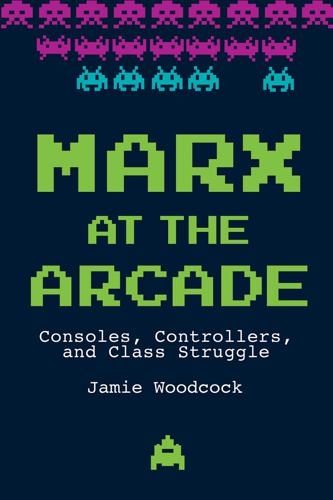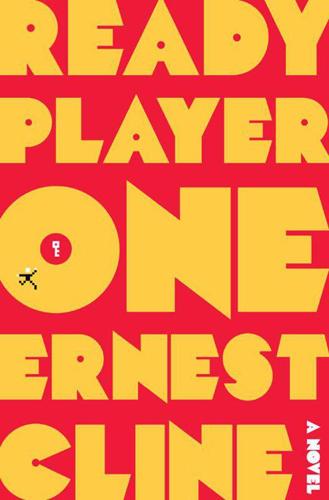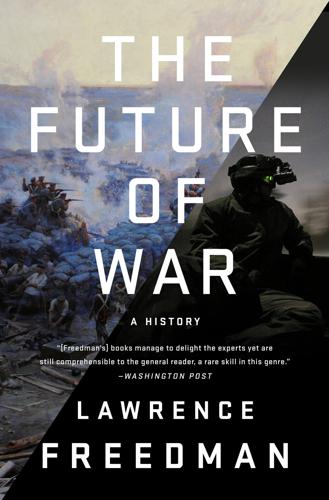
Fancy Bear Goes Phishing: The Dark History of the Information Age, in Five Extraordinary Hacks
by
Scott J. Shapiro
When Joshua responds, “Wouldn’t you prefer a nice game of chess?” David tells Joshua, “Let’s play Global Thermonuclear War.” David, however, is not playing a game—Joshua is a NORAD computer and controls the U.S. nuclear arsenal. By telling Joshua to arm missiles and deploy submarines, David’s hacking brings the world to the nuclear brink. The movie ends when David stops the “game” before it’s too late. Joshua, the computer program, wisely concludes, “The only winning move is not to play.” WarGames grossed $80 million at the box office and was nominated for three Academy Awards. The movie introduced Americans not only to cyberspace, but to cyber-insecurity, as well.
…
Data provided by the Roper Center for Public Opinion Research, University of Connecticut, cited in Susannah Fox and Lee Rainie, “The Web at 25, Part 1: How the Internet Has Woven Itself into American Life,” Pew Research Center, February 27, 2014, https://www.pewresearch.org/internet/2014/02/27/part-1-how-the-internet-has-woven-itself-into-american-life/#fn-10743–2. The movie WarGames: Fred Kaplan, “‘WarGames’ and Cybersecurity’s Debt to a Hollywood Hack,” The New York Times, February 20, 2016. WarGames: Scott Brown, “WarGames: A Look Back at the Film That Turned Geeks and Phreaks into Stars,” Wired, July 21, 2008, https://www.wired.com/2008/07/ff-wargames/?currentPage=all. “Man is in the loop”: Rick Inderfurth, “WarGames,” ABC Evening News, July 8, 1983. “relax and enjoy the film”: John Chancellor, “WarGames,” NBC Nightly News, July 13, 1983. look into it: Kaplan, “‘WarGames’ and Cybersecurity’s Debt.” NSDD-145: National Security Decision Directive Number 145, National Policy on Telecommunications and Automated Information Systems Security, September 17, 1984, https://irp.fas.org/offdocs/nsdd145.htm.
…
In these systems, Brandt claimed, “Man is in the loop. Man makes decisions. At NORAD, computers don’t make decisions.” Even though NBC News described the film as having “scary authenticity,” it concluded by advising “all you computer geniuses with your computers and modems and autodialers” to give up. “There’s no way you can play global thermonuclear war with NORAD, which means the rest of us can relax and enjoy the film.” Not everyone was reassured. President Ronald Reagan had seen the movie at Camp David and was disturbed by the plot. In the middle of a meeting on nuclear missiles and arms control attended by the Joint Chiefs of Staff, the secretaries of state, defense, and treasury, the national security staff, and sixteen powerful lawmakers from Congress, Reagan interrupted the presentation and asked the room whether anyone had seen the movie.

Super Thinking: The Big Book of Mental Models
by
Gabriel Weinberg
and
Lauren McCann
Published 17 Jun 2019
Now we will consider the same problem from the inverse (see inverse thinking in Chapter 1) and explore models that decrease your chances of a bad outcome. Often this means finding a way to avoid the conflict altogether. At the climax of the classic 1983 movie WarGames, World War III seems imminent. An artificial intelligence (known as Joshua) has been put in charge of the U.S. nuclear launch control system. Thinking he has hacked into his favorite game manufacturer, a teenage hacker (played by Matthew Broderick) unwittingly asks Joshua to play a “game” against him called Global Thermonuclear War, setting off a chain of events that has Joshua attempting to launch a real full-scale nuclear attack against Russia. Through dialogue, the character Professor Falken explains why he created Joshua and this game: The whole point was to find a way to practice nuclear war without destroying ourselves.
…
When all hope seems lost, the teenager recalls this conversation and asks if there is any way to make Joshua play against itself in tic-tac-toe, hoping the computer will learn that any strategy ends in a tie. After learning the futility of playing tic-tac-toe, Joshua proceeds to simulate all the possible strategies for the Global Thermonuclear War game and comes to the same conclusion. He says (in a computer voice): A strange game. The only winning move is not to play. How about a nice game of chess? The reason that there is no winner in Global Thermonuclear War is that both sides have amassed enough weapons to destroy the other side and so any nuclear conflict would quickly escalate to mutually assured destruction (MAD). As a result, neither side has any incentive to use its weapons offensively or to disarm completely, leading to a stable, albeit tense, peace.
…
You want to enlist these models when other conflict-avoidance models have failed and you are still faced with a situation that you think you can’t “win,” as when engaging would create so much damage it isn’t worth it or when you want to preserve your resources for more fruitful engagements (see opportunity cost in Chapter 3). Finally, as Joshua said in WarGames, sometimes “the only winning move is not to play.” An increasingly common example is conflict with the online troll, someone whose whole game is to irritate people and bait them into arguments they can’t win. As a result, the best move is usually not to engage with them (don’t feed the trolls; don’t stoop to their level; rise above the fray), though, as in any situation, you have to assess it on a case-by-case basis, and where reporting mechanisms exist, you should consider them too.

Marx at the Arcade: Consoles, Controllers, and Class Struggle
by
Jamie Woodcock
Published 17 Jun 2019
Two years later, at the Los Alamos laboratory (infamous for the Manhattan Project and the atomic bomb), programmers in their spare time developed the first blackjack game for the IBM 701.28 These early videogame links to the military-industrial complex were further solidified in 1955 with the introduction of the military war game Hutspiel, which simulated a war between NATO and the Soviet Union, represented, respectively, by blue and red characters. The similarities between these simulations and later videogames was riffed on in the 1983 film WarGames, in which Matthew Broderick’s character hacks into a military supercomputer. On finding a simulation called “Global Thermonuclear War” installed on the system, he believes it is a game and begins to play as the Soviet Union. In actuality, he is playing against a program that controls the real missile-launch control centers, which also do not realize this is a simulation.
…
The first followed the Cuban Missile Crisis, which saw the launch of the computer war game STAGE (Simulation of Total Atomic Global Exchange) by the US Department of Defense. Rather than ending in mutually assured destruction, the simulation predicted that the United States would defeat the Soviet Union in a thermonuclear war.30 Unfortunately, unlike in WarGames, there is no record of the simulation playing tic-tac-toe to show otherwise (luckily, this has never been tested in practice; otherwise the history of videogames—and the rest of the world—would be much shorter.) Within the “military-academic-industrial complex” that emerged, computer systems became “integral to this closed world, a crucial means to calculate the options of nuclear strategy, to think the unthinkable.”31 Also around this time, an MIT student named Steve Russell invented the game Spacewar!
…
Figures in US dollars have been converted from pounds sterling. 45MacDonald, “Why You Pay What You Pay.” 46Nieborg, “Prolonging the Magic.” 47Nieborg, “Prolonging the Magic.” 48Julian Benson, “EA Makes Twice as Much from DLC as It Does from Selling Full Games Online,” Kotaku, November 2, 2015, www.kotaku.co.uk/2015/11/02/ea-makes-twice-as-much-from-dlc-as-it-does-from-selling-full-games-online. 49Nieborg, “Prolonging the Magic”; italics in the original. 50Ian Bogost, Unit Operations: An Approach to Videogame Criticism (Cambridge, MA: MIT Press, 2006), 66. 51Nieborg, “Prolonging the Magic”; italics in original. 52Daniel Joseph, “Code of Conduct: Platforms Are Taking Over Capitalism, but Code Convenes Class Struggle as Well as Control,” Real Life, April 12, 2017, http://reallifemag.com/code-of-conduct/. 53Ben Kuchera, “Report: 7,672 Games Were Released on Steam in 2017,” Polygon, January 12, 2018, www.polygon.com/2018/1/10/16873446/steam-release-dates-2017. 54Joseph, “Code of Conduct.” 55Nick Srnicek, Platform Capitalism (Cambridge: Polity, 2017), 43. 56Joseph, “Code of Conduct.” 57Joseph, “Code of Conduct.” 58Joseph, “Code of Conduct.” 59Andy Chalk, “Valve and Perfect World Are Bringing Steam to China,” PC Gamer, June 11, 2018, www.pcgamer.com/valve-and-perfect-world-are-bringing-steam-to-china/. 60Holger Pötzsch and Phil Hammond, “War/Game: Studying Relations between Violent Conflict, Games, and Play,” Game Studies 16, no. 2 (2016). 61See, for example, Ed Halter, From Sun Tzu to Xbox: War and Video Games (New York: Avalon Publishing Group, 2006); James Der Derian, Virtuous War: Mapping the Military-Industrial-Media-Entertainment Network (London: Routledge, 2009); Nina B.

Ready Player One
by
Ernest Cline
Published 15 Feb 2011
I’d now been up for over twenty-four hours straight, jacked in the entire time. The last action I had to perform was instructing the WOPR supercomputer to “play itself” at tic-tac-toe. Since every game the WOPR played ended in a tie, this had the improbable effect of teaching the artificially intelligent computer that global thermonuclear war, too, was a game in which “the only winning move is not to play.” This prevented the WOPR from launching all of the United States’ ICBMs at the Soviet Union. I, David Lightman, a teenage computer geek from suburban Seattle, had single-handedly prevented the end of human civilization. The NORAD command center erupted in celebration, and I waited for the movie’s end credits to roll.
…
I rounded a corner and saw that the path led directly to a large brick building. The sign over the door said Snohomish High School—David’s school, and the setting of the next few scenes in the movie. My mind was racing as I ran inside. If all I had to do was rattle off lines of dialogue from WarGames on cue for the next two hours, this was going to be a breeze. Without even knowing it, I’d totally overprepared. I probably knew WarGames even better than I knew Real Genius and Better Off Dead. As I ran down the empty school hallway, another warning flashed in front of me: YOU’RE LATE FOR YOUR BIOLOGY CLASS! I continued to sprint at top speed, following the green path, which was now pulsing brightly.
…
He’d probably insisted that his avatar be the first to obtain the Copper Key and clear the gate. But I had a hard time believing he’d done it on his own. There was no way he was that good at Joust. Or that he knew WarGames by heart. But I now knew that he didn’t have to be. When he reached a challenge he couldn’t handle, like winning at Joust, he could just hand control of his avatar off to one of his underlings. And during the WarGames challenge he’d probably just had someone feeding him all of the dialogue via his hacked immersion rig. Once the remaining empty slots were filled, the Scoreboard began to grow in length, to display rankings beyond tenth place.

The Future of War
by
Lawrence Freedman
Published 9 Oct 2017
There they met with the commander who, on their telling, shared his concerns about the risk of over-automated decision-making. They also learnt about simulated war games. Out of this came the core plot of the movie WarGames, released in 1983. A teenager, David Lightman (played by Matthew Broderick), hacked into a supercomputer designed to predict outcomes of nuclear war known as War Operation Plan Response (WOPR). Lightman noted a number of familiar games but then saw one called ‘Global Thermonuclear War’ which he decided to play. This turned out to be a programme that could convince the systems operating nuclear missiles that this was the real thing. When he realised what he had done, and after arrest by the FBI for the hack, Lightman reached the embittered, dying scientist who had invented the programme to persuade him to give him the clue to turning it off.
…
When the movie was released the Pentagon was at pains to point out that it was misleading about NORAD’s role and also the possibility of the nuclear arsenal being out of human control. Whether or not the intent was to make a film in the spirit of Fail-Safe or Dr. Strangelove, alerting the audience to the risks of an inadvertent nuclear catastrophe, the main thought left by WarGames was the ease with which an outsider might hack his way into the most vital computer networks, highlighting the risks posed by remote access and simple passwords. This was the message taken away by President Reagan, a friend of Lasker’s parents, who was invited to an early showing and was sufficiently disturbed to ask officials whether this movie had a basis in any conceivable reality.
…
As the issue was investigated it turned out to be more serious than had been realised, leading to a set of studies into what was then described as ‘Telecommunications and Automated Information Systems Security’.6 This was a time of exploration into this developing networked world of information, a disembodied place where real things could be made to happen by anyone who could gain access. WarGames had pointed to the possibility of a war starting from within cyberspace. Yet not only was the term itself still unfamiliar, but the prefix also already had connotations of cyborgs, man-machine combinations with extended powers.7 The prospect of computers gaining the upper hand in some future conflict was linked naturally to the idea of robotic warriors, a standard feature of science fiction.

The Inner Lives of Markets: How People Shape Them—And They Shape Us
by
Tim Sullivan
Published 6 Jun 2016
The analogy, however, is quite false, for while chess is a formidable game of almost unbelievable complexity, it lacks salient features of the political and military struggles with which it is compared.” Chess allows for no bluffing. Both players have full information on the rules of the game and the current state of play. Not so in poker—or the game of global thermonuclear war. Those who consistently win at poker “rely on their ability to perceive opportunities offered by each changing situation, and on artful deception through bluffing.” Morgenstern concluded that if “chess is the Russian national pastime and poker is ours, we ought to be more skillful than they in applying its precepts.”13 This overlap between some quite esoteric mathematical game theory and the real world reflects the overall argument of The Inner Lives of Markets: von Neumann and Morgenstern took something instinctual and messy and provided a clear path forward using logical and coherent math.
…
See mathematics models, 15, 24–29 of platforms, 107–112 reality-based, 35–37, 45, 49–51, 141 traditional, 110, 133 See also lemon markets theory; markets; platforms Edelman, Ben, 123–124 efficiency optimization, 85–86 eighteenth-century book markets, 90–91 Eisenstein, Don, 154 Elfenbein, Daniel, 73–75 empirical economics, 45 English auctions, 83, 100 equilibrium, existence of, 29, 31–34, 36–37, 40, 45, 76 Euler’s buckling equation, 141 exploding offers, 140 Federal Communications Commission (FCC), 102–103 feedback ratings, customer, 52, 74–75 Feeding America, 154 Findlay, Ronald, 85 first-price (live) auction, 84 first-price sealed-bid auction, 86–87, 99–100 Fisman, Ray Airbnb experience, 171–172 lesson on selling lemons, 59 study on eBay seller motivation for giving to charities, 73 fixed prices, auction versus, 96–97 food bank market system, 154–160 Foundations of Economic Analysis (Samuelson), 28 Fourcade, Marion, 20 fraternity rush, 140 free markets See markets frictions, market, 169–174 “Friday Car,” 46 Friedman, Milton, 72, 151 fundamental attribution error, 178 fundamentalists, market, 16–17 Future Shop (Snider and Ziporyn), 42 Gale, David, 136, 137–138 Gambetta, Diego, 68 game theory, 25–27, 136, 178–179 gang markings as signals, 61–62, 67–68 general equilibrium model, 31–34, 36–37, 40, 76 German POW camps, marketplaces at, 7–10, 13 Giving Works program (eBay for Charity), 73–75 global thermonuclear war, game of, 26 Goethe, Johann Wolfgang von, 89–92, 101 greed, in platforms, 128–129 Groves, Theodore, 93 guarantees, money-back, 69–71 Hall, Robert, 94 Hayek, Friedrich, 13 health markets, lemon problems and, 58–59 Healy, Kieran, 20 Heilbroner, Robert, 20, 21 Henry, John, 80–81, 87–89 Hermann and Dorothea (Goethe) royalties, 90–92, 101 Hernandez, Frances, 61–62 Herodotus, 81 Hicks, John, 34 hierarchy in POW camps, survival rates and, 10–13 Holderness, Clifford, 11–12 home contractors, 119–120 Hoshijima Susumu, 10–11 hotel lobbies, Airbnb vs., 172 Hoteling, Harold, 30 house exchange algorithm, 163–164 “How to Spot Fake Tiffany Jewelry” (yvonne9903), 52–53 human capital theory, 35 income, distribution of, 22 industrial organization, 117–118 inferior good, 180 information management system, 41–42 “Inside the School Assignment Maze” (article), 146 insights, market, 14–15 internet commerce, 41–43 lifestyle changes with creation of, 2–3 scams, 52–55 See also auctions invisible hand metaphor, 21, 33, 182 Japanese POW camps, 10–13, 175–177 Kakutani, Shizuo, 32 Das Kapital (Marx), 23 Keynes, John Maynard, 49–50 “Kidney Exchange” (Roth et al.), 164–165 kidneys sales, 160–161 transplant exchange algorithm, 162–166 King Rat (Clavell), 175–177 Klein, Joel, 143–144 labor markets, 48, 64–66 labor theory of value, 23 ladies night at bars, 123 laundry service platform, 112 lemon markets theory, 44–51, 58–59, 64, 112 “Let Them Eat Pollution” (article), 167 life insurance, 1840s, 153 Lincoln Elementary, 1–2 Little, I.
…
At some point, the researchers thought it might be interesting to delve into game theory, the branch of mathematics that is used by social scientists to better understand interactions among multiple players, like the Cold War machinations of the Americans and Soviets in the 1950s. According to Shapley, RAND never tried to “pull me into . . . war-gaming things.” He was, as promised, left to do his own thing and proved some important, if esoteric, game theoretic concepts, then went off to Princeton to do more of the same as a PhD student. (His rather esoteric thesis was titled, “Additive and Non-Additive Set Functions.”) Although he could surely have gotten a top academic post, Shapley returned to RAND because it had been, and continued to be upon his return, a place where he could focus on his work unencumbered by the distractions of students or classes.

The Code: Silicon Valley and the Remaking of America
by
Margaret O'Mara
Published 8 Jul 2019
It was the tech counterculture’s original Big Brother: the computer-powered federal government, and its very high-tech ways of making war. CHAPTER 17 War Games “SHALL WE PLAY A GAME?” the computer asked David Lightman. “Love to,” the teenage geek responded. “How about Global Thermonuclear War?” With two text commands, the 1983 summer blockbuster WarGames shifted into high gear. Armed with nothing but an IMSAI computer and a modem in his bedroom, a kid in suburban Seattle inadvertently hacks into a top secret Defense Department mainframe. Before long, the protagonist and his female companion find themselves deep in the Air Command’s mountain bunker, frenetically trying to reprogram a supercomputer that is determined to launch thousands of nuclear warheads.
…
The program quickly acquired a not-so-charitable nickname: “Star Wars.”3 The prospect of space battles between the light and dark sides of The Force might have been far-fetched. The possibility of a WarGames-like scenario wasn’t. The program’s deep dependence on computer software raised the ominous possibility of bad code triggering accidental global annihilation. Worst of all, in the minds of Americans now conditioned to think of government as an inherently bad thing, it was going to be built and controlled by bureaucrats. “Technology is not a panacea for our ills,” explained WarGames director John Badham, when asked about the message of his film, “and bureaucracy is something that will surely get you in deep, deep trouble every time if left to run untrammeled.”
…
Before long, the protagonist and his female companion find themselves deep in the Air Command’s mountain bunker, frenetically trying to reprogram a supercomputer that is determined to launch thousands of nuclear warheads. At the last moment, Lightman’s programming skills save the world from mutually assured destruction. The story was pure Hollywood, but for the popcorn-chomping millions watching in the cool dark of American movie theaters that summer, WarGames wasn’t all that far from reality. After decades of test ban treaties and détente, America was once again ramping up its nuclear arsenal and employing the highest of high technology to do it. The post-Vietnam American military could no longer keep up with the Soviets in terms of size—the U.S. had abolished the draft, while the U.S.S.R. had forced conscription—but it had a huge advantage when it came to technology.

Superintelligence: Paths, Dangers, Strategies
by
Nick Bostrom
Published 3 Jun 2014
There may instead be an interval during which the system gradually becomes able to outperform the external research team on an increasing number of system-improving development tasks. 2. In the past half-century, at least one scenario has been widely recognized in which the existing world order would come to an end in the course of minutes or hours: global thermonuclear war. 3. This would be consistent with the observation that the Flynn effect—the secular increase in measured IQ scores within most populations at a rate of some 3 IQ points per decade over the past 60 years or so—appears to have ceased or even reversed in recent years in some highly developed countries such as the United Kingdom, Denmark, and Norway (Teasdale and Owen 2008; Sundet et al. 2004).
…
For example, if events in the digital sphere unfolds a thousand times faster than on the outside, then a biological human would have to rely on the digital body politic holding steady for 50,000 years of internal change and churn. Yet if the digital political world were anything like ours, there would be a great many revolutions, wars, and catastrophic upheavals during those millennia that would probably inconvenience biological humans on the outside. Even a 0.01% risk per year of a global thermonuclear war or similar cataclysm would entail a near certain loss for the biological humans living out their lives in slowmo sidereal time. To overcome this problem, a more stable order in the digital realm would be required: perhaps a singleton that gradually improves its own stability. 16. One might think that even if machines were far more efficient than humans, there would still be some wage level at which it would be profitable to employ a human worker; say at 1 cent an hour.
…
“Brain–Machine Interfaces: Past, Present and Future.” Trends in Neuroscience 29 (9): 536–46. Legg, Shane. 2008. “Machine Super Intelligence.” PhD diss., University of Lugano. Leigh, E. G., Jr. 2010. “The Group Selection Controversy.” Journal of Evolutionary Biology 23(1): 6–19. Lenat, Douglas B. 1982. “Learning Program Helps Win National Fleet Wargame Tournament.” SIGART Newsletter 79: 16–17. Lenat, Douglas B. 1983. “EURISKO: A Program that Learns New Heuristics and Domain Concepts.” Artificial Intelligence 21 (1–2): 61–98. Lenman, James. 2000. “Consequentialism and Cluelessness.” Philosophy & Public Affairs 29 (4): 342–70. Lerner, Josh. 1997.

Warnings
by
Richard A. Clarke
Published 10 Apr 2017
The downward pressure from the blast completely devastated eight hundred square miles, about twenty times the size of Washington, D.C. It was one of the largest explosions on Earth ever recorded by humans. David Morrison, in his book, had simply shown what would have happened if the 1908 event had taken place at the time of his writing. It might have triggered global thermonuclear war. If the asteroid had been a few minutes later in arriving at Earth, its impact could have been over Helsinki or Oslo. Even in 1908, that would have killed hundreds of thousands of people. The message of Morrison’s book was that the 1908 Tunguska event was not as anomalous as we would like to think, and a strike of equal or greater magnitude could happen again.
…
As the Hurricane Pam exercise kicked off in the sweltering heat and humidity of late July, a sinking feeling in van Heerden’s stomach began to rumble, and then it grew. In spite of his previous enthusiasm for mounting such planning efforts within the New Orleans emergency preparedness community, van Heerden was soon exposed to the unfortunate truth: while local officials maximized the opportunity to “war-game” their emergency plans, federal managers in town from FEMA didn’t seem to take seriously the enormity of the probable catastrophe. He made the rounds, still not clearly understanding why federal officials did not seem to fully grasp the gravity of the crisis, nor why they seemed to ignore the years of work and research produced by the LSU Hurricane Center and the Hurricane Public Health Center.

The Better Angels of Our Nature: Why Violence Has Declined
by
Steven Pinker
Published 24 Sep 2012
Books with titles like The Clash of Civilizations, World on Fire, World War IV, and (my favorite) We Are Doomed boast a similar confidence. Who knows? Maybe they’re right. My aim in the rest of this chapter is to point out that maybe they’re wrong. This isn’t the first time we’ve been warned of certain ruin. The experts have predicted civilization-ending aerial gas attacks, global thermonuclear war, a Soviet invasion of Western Europe, a Chinese razing of half of humanity, nuclear powers by the dozen, a revanchist Germany, a rising sun in Japan, cities overrun by teenage superpredators, a world war fought over diminishing oil, nuclear war between India and Pakistan, and weekly 9/11-scale attacks.240 In this section I’ll look at four threats toto the New Peace—a civilizational clash with Islam, nuclear terrorism, a nuclear Iran, and climate change—and for each one make the case for “maybe, but maybe not.”
…
International Security, 13, 80–90. Johnson, D.D.P. 2004. Overconfidence and war: The havoc and glory of positive illusions. Cambridge, Mass.: Harvard University Press. Johnson, D.D.P., McDermott, R., Barrett, E. S., Cowden, J., Wrangham, R., McIntyre, M. H., & Rosen, S. P. 2006. Overconfidence in wargames: Experimental evidence on expectations, aggression, gender and testosterone. Proceedings of the Royal Society B, 273, 2513–20. Johnson, E. A., & Monkkonen, E. H. 1996. The civilization of crime. Urbana: University of Illinois Press. Johnson, E. J., Hershey, J., Meszaros, J., & Kunreuther, H. 1993.